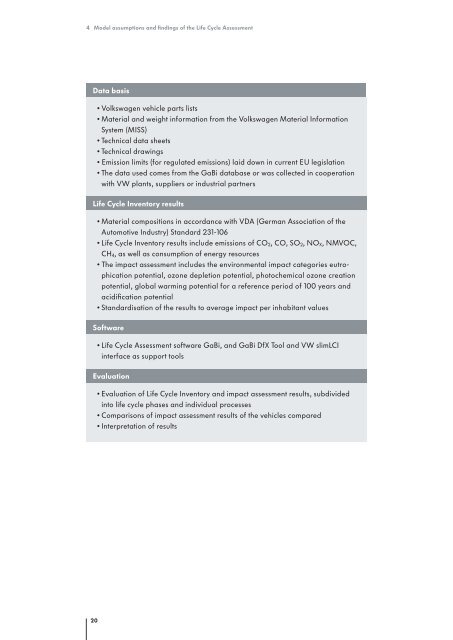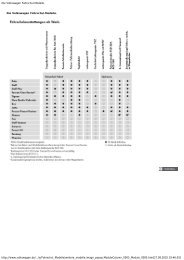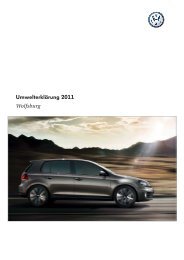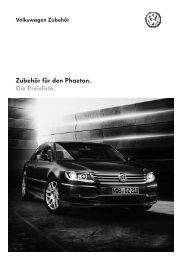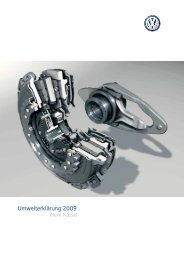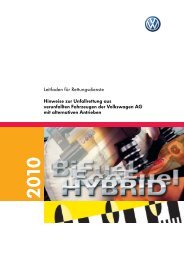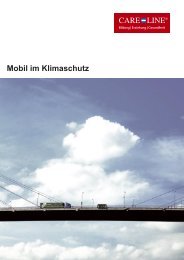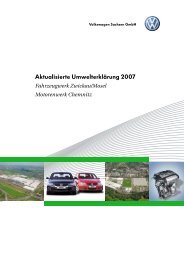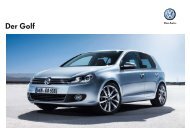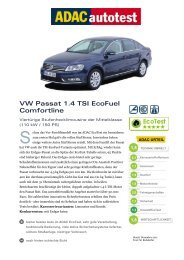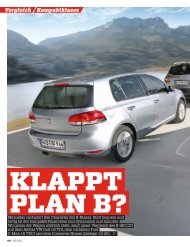Detailed Version - Volkswagen AG
Detailed Version - Volkswagen AG
Detailed Version - Volkswagen AG
You also want an ePaper? Increase the reach of your titles
YUMPU automatically turns print PDFs into web optimized ePapers that Google loves.
4 Model assumptions and findings of the Life Cycle Assessment<br />
Data basis<br />
• <strong>Volkswagen</strong> vehicle parts lists<br />
• Material and weight information from the <strong>Volkswagen</strong> Material Information<br />
System (MISS)<br />
• Technical data sheets<br />
• Technical drawings<br />
• Emission limits (for regulated emissions) laid down in current EU legislation<br />
• The data used comes from the GaBi database or was collected in cooperation<br />
with VW plants, suppliers or industrial partners<br />
Life Cycle Inventory results<br />
• Material compositions in accordance with VDA (German Association of the<br />
Automotive Industry) Standard 231-106<br />
• Life Cycle Inventory results include emissions of CO2, CO, SO2, NOX, NMVOC,<br />
CH4, as well as consumption of energy resources<br />
• The impact assessment includes the environmental impact categories eutrophication<br />
potential, ozone depletion potential, photochemical ozone creation<br />
potential, global warming potential for a reference period of 100 years and<br />
acidification potential<br />
• Standardisation of the results to average impact per inhabitant values<br />
Software<br />
• Life Cycle Assessment software GaBi, and GaBi DfX Tool and VW slimLCI<br />
interface as support tools<br />
Evaluation<br />
20<br />
• Evaluation of Life Cycle Inventory and impact assessment results, subdivided<br />
into life cycle phases and individual processes<br />
• Comparisons of impact assessment results of the vehicles compared<br />
• Interpretation of results


